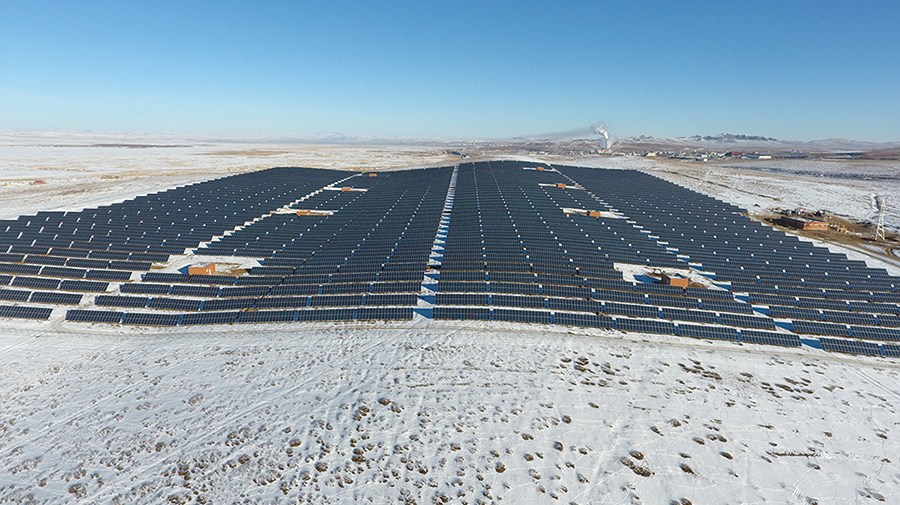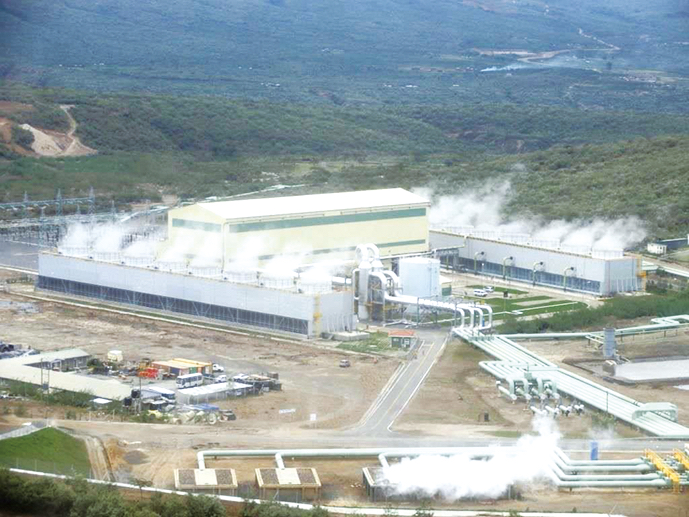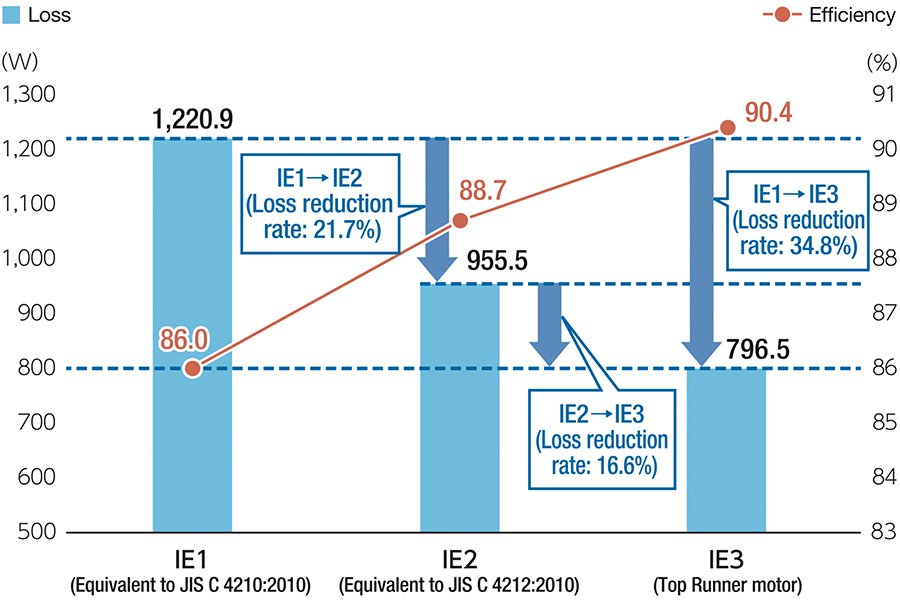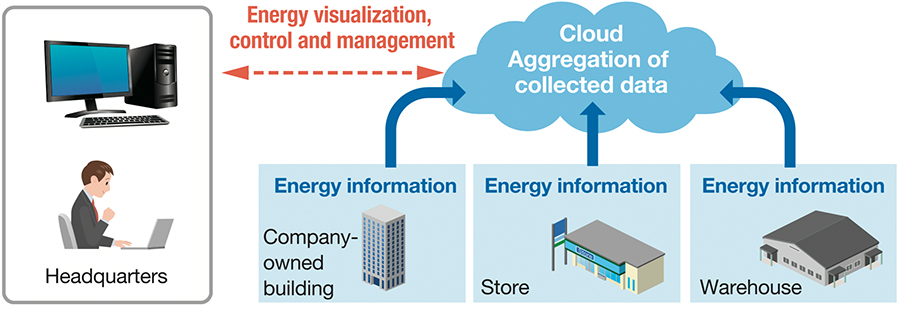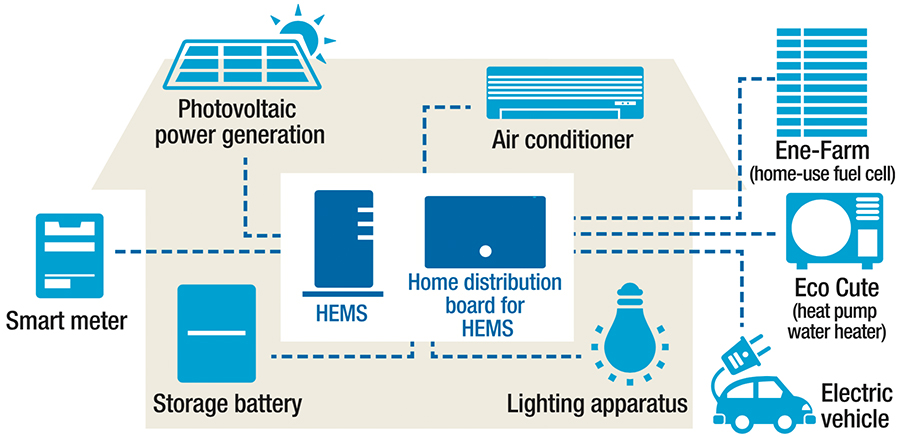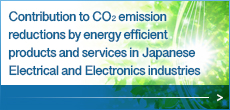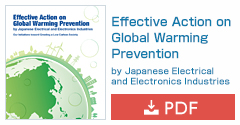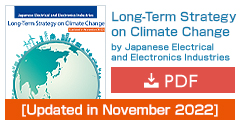2
Our Contribution to Energy Saving
and Decarbonization with Various Technologies

Society-wide Energy Saving and Decarbonization through Products and Services
Companies in Japanese EE industries promote cooperation between various interested groups by providing a variety of technologies, products and services to domestic and international sectors, including industrial, business, household, transportation and energy conversion sectors, and contribute to energy saving and decarbonization on a global scale.
Examples of contribution in each sector
Renewable energyEnergy conversion sector
Renewable energy is spreading at an impressive rate around the world, and Japan's 6th Strategic Energy Plan states that renewable energy is to become a major power source. Companies in Japanese EE industries are promoting the use of renewable energy on a global scale.
Photovoltaic power generation
Companies in Japanese EE industries have proceeded with efficiency improvement and cost reduction of large-scale photovoltaic power generation (mega solar), and worked on its promotion domestically and internationally.
In Mongolia, companies are promoting a project that utilizes the Joint Crediting Mechanism (JCM), in which the introduction of 10 MW photovoltaic power generation is expected to reduce CO2 emissions by approximately 18,000 tons per year.
Geothermal power generation
Geothermal power generation can generate large energy stably. Especially in the Middle East and East Africa regions, where power demand is expected to grow in the future, plans for the construction of many new geothermal power plants are scheduled to be built.
For example, Kenya has set a development target to expand its geothermal power generation capacity to 5,000 MW by 2030. Companies in Japanese EE industries are participating in the plan by supplying equipment such as steam turbines and generators to geothermal power plants built there.
Wind power generation
Recently,development of offshore wind power generation, which is expected to generate electricity from stable and strong winds, is in progress worldwide.
In Fukushima Prefecture, Japan,from 2011, demonstration projects of the large floating offshore wind turbine system (2 MW, 5 MW and 7 MW) developed particularly for places with steep submarine topography were conducted.
Offshore wind power generation is positioned as an important field of Green Growth Strategy of the Government for making renewable energy the main power source as a last card. To create attractive domestic markets, it is targeted to form 10 mil. kW projects by 2030 and 30-45 mil. kW projects including floating type facilities by 2040. With such introduction targets and development of rules, it is planned to carry out domestic and overseas investment promotion, structuring strong supply chains, and next generation technology development and international cooperation also for development in Asian countries.
High efficiency motorsIndustrial sector
High-efficiency motors (top runner motors) specified as target products for the Top Runner Progra※3 are expected to reduce power loss by approximately 35% compared to the conventional JIS C 4210: 2010 standard values. According to the Ministry of Economy, Trade and Industry's estimation, the amount of power reduction expected when all conventional-type motors are replaced by IE3 motors (premium efficiency) will be about 15.5 billion kWh per year, which is equivalent to about 1.5% of Japan’s total power consumption. Thus, Top Runner motors are expected to bring about an extremely great energy-saving effect. (Fig. 8)
- ※3
- This requires standards of energy-saving performance of home electric appliances and fuel economy performance of automobiles to be higher than or equal to those of products with highest performance currently on the market.
Fig. 8 Efficiency of motors and their loss reduction rates
(e.g., motors with 50Hz, 4 magnetic poles and 7.5kW)
Source:Japan Electrical Manufacturers’ Association
FEMSIndustrial sector
To reduce energy consumption in an entire factory, companies in Japanese EE industries are promoting the spread of FEMS※4, a factory energy management system that monitors energy consumption, conditions peak power, and controls the operation of air conditioning, lighting equipment and production lines depending on the situation.
These companies are also developing IT/IoT solutions to improve production efficiency through total visualization of data from watt-hour meters and water meters as well as data on the operational status of production lines within a factory.
- ※4
- FEMS:Factory Energy Management System
BEMSBusiness sector
Companies in Japanese EE industries are promoting the spread of BEMS※5, a building energy management system that supports optimum energy operation by visualizing energy usage status in office buildings and by controlling air conditioning, lighting, storage batteries, and so on.
Initial costs can be reduced by using cloud technologies, which has led to an increase in its introduction in small and medium-sized buildings. Depending on the facility and the manner of operation, the introduction of a BEMS is expected to reduce energy consumption by approximately 10%. (Figs. 9 and 10)
- ※5
- BEMS:Building Energy Management System
Fig. 10 Rates of energy reduction by BEMS
Source:Japan Electronics and Information Technology Industry Association
LED lightingBusiness sector
Use of high-efficiency LED lighting that has high energy-saving performance and adoption of lighting design appropriate for each usage are enabling acceleration of energy savings in the entire office building.
There is a case in which an office that had full LED installation in its ceiling lighting successfully reduced the expense of lighting up to almost one-third of that of fluorescent lighting, with a combination of personal control, motion sensors and daylight sensors.
Energy-saving household appliancesHousehold sector
Many household appliances and office equipment are specified as target products for the Top Runner Program under Japan's Energy Conservation Act. Companies in Japanese EE industries have realized significant enhancement of energy-saving performance by steadily making progress in the improvement of energy efficiency and the reduction of standby power consumption through development and introduction of innovative technologies. (Fig. 11)
Fig. 11 Improvement of energy efficiency of home electric appliances
Source:Created by Liaison Group of Japanese Electrical and Electronics Industries for Global Warming Prevention based on estimation data included in "Fiscal 2021 Smart Life Recommendations Book" published by the Association for Electric Home Appliances
HEMSHousehold sector
Companies in Japanese EE industries are promoting the spread of HEMS※6, a household energy management system that realizes energy saving by visualizing the usage status of household appliances and electrical facilities as well as electricity and gas consumption by using a monitor screen and automatically controlling energy usage.(Fig. 12)
- ※6
- HEMS:Home Energy Management System
Traffic monitoring systemTransportation sector
Increase in CO2 emissions due to traffic congestion poses environmental problems, particularly in developing countries. To resolve this, companies in Japanese EE industries are promoting the spread of a traffic monitoring system that effectively limits environmental load and traffic congestion by detecting traffic congestion and accidents on a real-time basis with a high degree of accuracy, and by optimally controlling traffic lights by utilizing AI and IoT technologies. This system has been introduced in various countries, including Indonesia and the Philippines.
HV, PHV and EVTransportation sector
With the tightening of environmental regulations in each country, HVs, PHVs and EVs※7 have already started to spread around the world.
HVs, PHVs and EVs are loaded with many electronic devices such as batteries and motors instead of conventional engines. It is also necessary to construct charging facilities. Companies in Japanese EE industries are proceeding with the development of electronic devices and charging facilities for HVs, PHVs and EVs, contributing to their spread.
- ※7
- HV: Hybrid vehicle, PHV: Plug-in hybrid vehicle, EV: Electric vehicle
